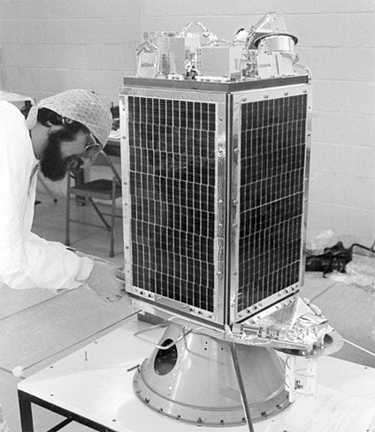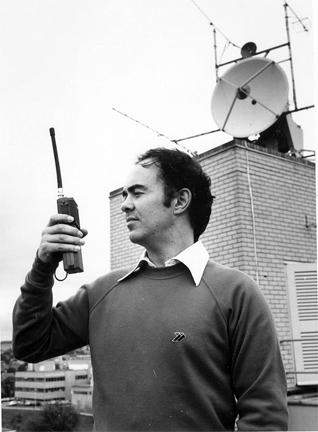
[SatNews] Surrey Satellite Technology LLC Ltd. is celebrating the UoSAT-2's 30th birthday.

Photo of the UoSat-2 satellite, courtesy of SSTL.
UoSAT-2 was launched on March 1st, 1984, from Vandenberg Air Force Base in the USA and carried some novel payloads, including a "Digitalker".
Today, UoSAT-2 still transmits its VHF telemetry on a regular 11-day cycle, although the satellite’s batteries are exhausted after some 160,000 charge cycles and transmissions are now detectable only when it is in sunlight. However, the telemetry continues to be tracked by amateur radio satellite enthusiasts worldwide, using the predictable transmissions to help calibrate their equipment.
Following the successful first microsatellite launch of UoSAT-1 from the Surrey team in 1981, NASA again offered a second launch opportunity—but with only 6 months warning! Rising to the challenge and literally working day-and-night, the Surrey team comprising about a dozen researchers and AMSAT members designed and built the 70kg UoSAT-2 microsatellite just in time for the launch as a ‘piggyback’ passenger with NASA’s LANDSAT-5. Incorporating many of the lessons learned from their first satellite, UoSAT-2 carried some novel experiments – a “Digitalker” speech synthesizer, specifically designed for school demonstrations of satellite telemetry and orbital physics, alongside experiments including magnetometers, an early CCD camera, a Geiger tube and a sensitive microphone to detect micro-meteoroid impacts.

An early photo of SSTL's now Executive Chairman, Professor Sir Martin Sweeting, testing a handheld Digitalker unit.
In the days before GPS, UoSAT-2 provided a novel communication system for the 1988 Canadian-Soviet Ski-trek arctic expedition, a group of intrepid explorers from Canada and the USSR who crossed the Arctic Ocean from Siberia to Ward Hunt Island, just off Canada, via the North Pole between March and June 1988. The position of the skiers’ emergency beacon was calculated daily by US and Soviet COSPAS-SARSAT ground stations, relayed to the Surrey Mission Control Groundstation by telex, and uploaded to the UoSAT-2 Digitalker which then ‘spoke’ the latitude and longitude of the ski party via its VHF beacon. In a sun-synchronous, 650km low Earth orbit, UoSAT-2 flew over the pole every 98 minutes at which point the group could receive the broadcast from the satellite using their small handheld VHF radios that were designed to work at very low temperatures. The Digitalker communications system could also serve as an emergency channel in the event that all other radio links failed. Thousands of amateur radio listeners and schoolchildren also monitored the spoken messages from the Digitalker and plotted the path of the expedition – many using the then state-of-the-art BBC microcomputer! There’s more about the Ski-trek expedition, and a recording of the Digitalker, on the expedition home page at http://www.meerman.fsnet.co.uk/NorthPole/textpan.html
UoSAT-2 was one of the first satellites to prove that commercial grade microprocessors and memory chips, which had only just become readily available, mass produced and cheaper in the early 80s as part of the microcomputer revolution, could be used to build small, cost-effective yet capable satellites. The idea of taking advantage of commercially available technology and adapting it for space, instead of using expensive ‘space-grade’ components, was virtually unheard of at the time, but SSTL proved the concept was viable and has gone on to build a highly successful business.
Today, UoSAT-2 is the longest-serving of 13 satellites that SSTL and the Surrey Space Centre track from ground stations in Guildford, UK.
SSTL and the Surrey Space Centre have come very long way from those early days of the 1980s!
The SSTL infosite may be accessed at http://www.sstl.co.uk/

